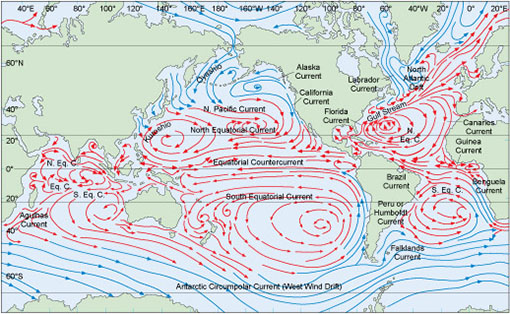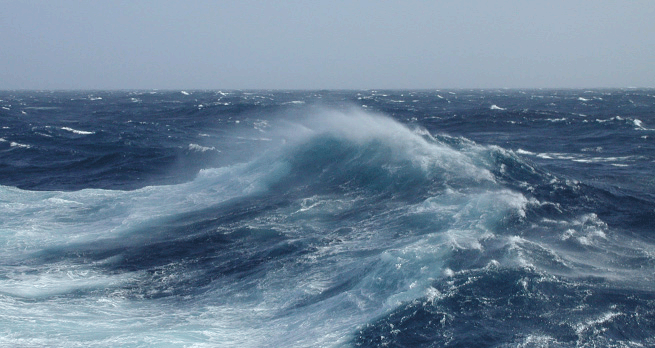4.1 The global surface circulation
Unusual items washed up on beaches indicate the existence of ocean currents. For example, tree trunks are often washed up on the beaches of eastern Greenland - yet no trees have grown there for thousands of years. Figure 15 is a schematic diagram of the surface currents.

The fresher waters off the coast of Portugal mentioned in reference to Figure 10 are part of a vast clockwise surface circulation in the North Atlantic which consists of the Gulf Stream, the North Atlantic Current and the North Equatorial Current. This clockwise circulation is reflected in an anticlockwise pattern in the South Atlantic Ocean.
In the Pacific Ocean a similar clockwise pattern exists in the Northern Hemisphere and likewise an anticlockwise pattern in the Southern Hemisphere. The main difference between the two oceans is that the circulation in the Pacific Ocean is orientated more along lines of latitude than that in the Atlantic Ocean.
In the higher latitudes of the Northern and Southern Hemispheres the situation is different:
- the north has a series of smaller closed circulation
- the south has a continuous current around the Antarctic continent called the Antarctic Circumpolar Current.
